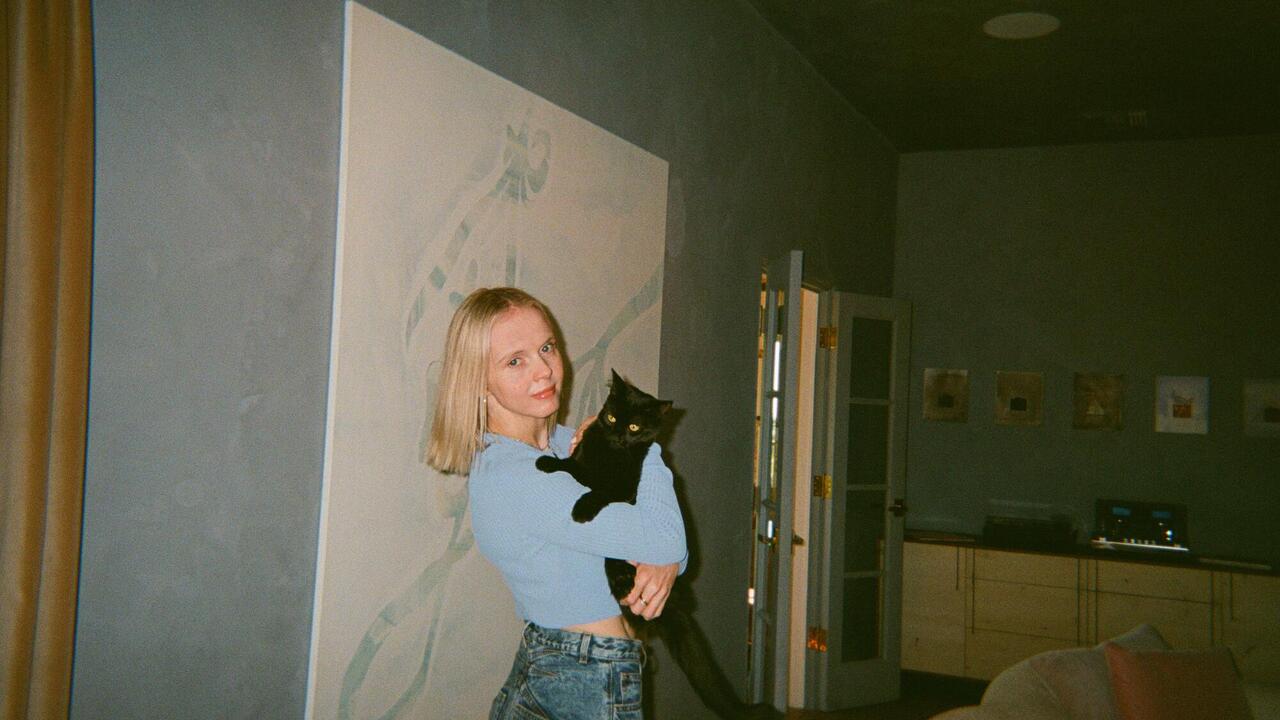Beyond Control
An interview with Susan Hiller
An interview with Susan Hiller
Stuart Morgan: You are attracted to things beyond your control.
Susan Hiller: I'm interested in things that are outside or beneath recognition, whether that means cultural invisibility or has to do with the notion of what a person is. I see this as an archaeological investigation, uncovering something to make a different kind of sense of it. That involves setting up a situation which welcomes this perhaps anarchic, non-volitional stage of awareness.
An unedited stage?
Yes, in response to a situation structured to create a heightened or more precise awareness.
Gender has been another concern.
These things go together. Understanding the implications for perception and behaviour of my entry into language as a sexed subject, and understanding how this is definitely not the same thing as being limited to activities that are conventionally defined as feminine, in fact gave me the impetus to explore areas that used to be considered off-limits in art.
Work in Progress (1979) could be seen exactly as a so-called feminine art work: pulling your paintings apart thread by thread, turning them into something different.
The idea of simultaneously making and unmaking could be traced to any mystical tradition. To associate it solely with women would be astonishing.
Is it a means of prevention?
That seems contradictory. In remaking my old paintings I wanted change, but everything changes inevitably. I just brought things more quickly to the point they would reach anyway. In contrast, the culture of art in our society involves fixing: putting things in museums and not letting them deteriorate. But in other societies, the kind of sculpture that influenced the early Modernists - African, Polynesian - is left to rot, raising the question of how continuity of style can exist in places where no visual model exists to be emulated. We're different; we think that if we can't keep a painting perfect, we'll have no more painting in future.
You, in contrast, continue your conceptual exercise of burning your work.
Every year I transform some works into other formats. The series of burnt relics began in 1972. I placed the ashes of burned paintings in chemical containers that measure and contain what can't be contained. They are like burial urns too, and since I regard them as just as interesting to look at and experience as paintings, maybe it reflects a wish for everything to be seen as having the same potential for insight. Like traces or remnants, they point forwards and backwards at the same time.
You also cut old paintings into equal sized rectangles and sewed those together, one on top of the other.
I called them Painting Blocks (series begun 1970/71). Each has the scaled-down dimensions of the original painting. The project turns surface into mass, painting becomes sculpture. It's a materials-based comparison. (At present in this country we have an untrue history of Conceptualism which suggests it is totally language-based.)
Other early works, like Dream Mapping (1974) involved other people.
That's right. In that piece participants collaborated to develop a system for the graphic notation of dream events. After about a month we decided not to work with words but with diagrams.
Diagrams of what?
Of dreams.
Of what they saw in dreams?
Or of the location of events, or of structures. People evolved their own notational system. For the last three nights we went to a site in the countryside where there was a remarkable occurrence of mushroom circles: fairy rings. In folklore, if you fall asleep in a fairy ring, you'll be carried away to fairyland, like in a state of altered consciousness. So on the last three nights everybody picked a fairy ring and went out and slept in it all night. Next day we collectively mapped our dreams, by which I mean that we first diagrammed or drew our individual dreams, then we superimposed them one on the other and came up with a collective dream map. I was writing a book on dreams with David Coxhead, so I was aware of all sorts of traditions about dream incubation, which means going to a special place to have a heightened dream - a pattern the world over for curing ailments - but also the idea of the collective evolution of a notational system for dreams. In many Native American or Australian Aborigine groups such a system as an artform was not seen as representational: it's not a picture of a dream image but a set of notes in visual diagrammatic form. The two ideas came together in this piece.
But then for me there was a difficulty, which was that work which began as a deeply-felt attempt to be non-hierarchical, non-elitist, non-product-oriented, outside-the-gallery-system, getting back to basics, working with friends, remained more elusive and more esoteric than a painting could ever be, because it was an enactment, a performance where no gap exists between audience and participants. They're the same. So on one level what had seemed a perfect solution was not really such a good format, because the experience of the piece could not extend beyond the original participants. What I retained from this series of pieces was the conviction that the other person has to be in the work or it isn't interesting to do.
Is there a rift between your two kinds of practice in this early period?
After several years of work that was on one hand Minimalist and materials-based, like the sewn canvases, and on the other hand immaterial and time-based, like the investigation pieces for groups of people, I really wanted to resolve the dichotomy. First I made a mental equation between materials and ideas. (That's why I've always said I have a materials-based practice.) I made Dedicated to the Unknown Artists (1972-76), a rough sea postcard work, and a slide piece called Enquiries/Inquiries (1973 & 1975) based on a sort of cultural catechism taken from popular encyclopedias in Britain and the United States. (Hence the two spellings of the same word.) These works used an approach which has remained important for me and comes out of Minimalism: putting together many similar units with tiny differences. My work was starting to come together from about 1973. The early ideas carried through to later works that require the involvement of viewers in a different way. It goes back to Michael Fried's idea of the theatrical. He meant that invidiously. I took it differently. Because I come from a conjunction of Minimalism and Fluxus, I combined the interactive with the non-theatrical and turned this into another position which insists on the participation of the viewer as essential to the work. In Monument (1980/81), for instance, where the entire piece is activated by a person who sits on a bench listening to a sound tape, a person must be prepared to be seen in public performing a private act of listening. Since that person is seen by other viewers against a backdrop of photographic images, the piece exists as a tableau with a living centre, while the person is also part of the audience for the work. That was the kind of solution I arrived at for the problem raised by my earlier very private investigative works, which left behind only traces or pieces of evidence and documents. The thing that unifies everything is the use of cultural artefacts from our society as starting points. At the time, this was a new thing to be doing. If you think the idea through, you realise that every type of format is already an artefact, including stretchers and canvas, the television screen, so how could artists not be working with artefacts? In that sense, everybody is working anthropologically.
And politically, too?
Well, it's work in the world, which contributes as much to knowledge and shifts in attitude as any other form of work. At the same time, art has a mirroring function; it can only disclose an image of what is already available to us. Because we are products of our society and culture, artists don't know anything that anybody else doesn't know, but we can show people, ourselves included, what we don't know that we know.
You also made participatory works for hundreds of people.
Yes, Street Ceremonies (1973) in the open air in Notting Hill, involved about 200 people. Another much smaller group work made later the same year was called The Dream Seminar. Some people from both of those pieces took part in Dream Mapping.
Artists' early works prepare for what is to come. In your case, it was a total assault on the integrity of the art object and a full-scale attack on the idea of the individual.
I didn't see it as an attack; more, that I was wounded and had to make a response. I'm not saying I consciously felt a sense of damage. Those were confident days. It was wonderful to be in England. People were crossing borders freely. It was part of a mood: a different, more integrated period. We were lucky to be around. My confidence came from having emerged at that period. I had nothing to lose, so why not follow my own predilections? I liked being where I was. There was no pressure to establish an art career. Everyone had abandoned all that; you did whatever you did, and if it turned out to be music or painting or writing, great. Or you didn't have to do anything, you could just grow vegetables. We had shrugged off the need to define ourselves, have a career, get a mortgage, all those things.
One work that emerged from this attitude was Sisters of Menon.
Those scripts emerged on a visit to France, where I was staying in a small village. It was there that the Sisters of Menon events occurred. Admittedly, the stage was set for some altered state of consciousness, but it wasn't anything peculiar; I accepted this as part of the way images and ideas were transmitted, at least among artists, because you find that in art and also in science, unconnected people in different places seem to come up with the same idea at the same time. So it didn't seem freaky. Suddenly, I started to write and write and write... That was in 1972, and then I lost the manuscripts or misplaced them or put them away somewhere and forgot about them. When I came across them again a few years later, I decided that if I formalised the material it could become a work. At that point I added four pages of commentary. The cross-shaped formation is simple to arrange: X number of A4 pages. That made sense since a cross appears in the text itself; the four pages of commentary became four ends, four panels at the ends of the arms of the cross. The formal configuration and commentary pages were done in 1979, the year I found the lost scripts.
What did you decide it meant?
I don't know. It convinced me of the reality of the divided self, and that one person is many voices but there is no bounded unit who contains them. They could be seen as possibilities of being. We have ways to tune out most of them and tune in some. I suppose that when they become overwhelming, our society says you're mad or schizophrenic. This experience was not overwhelming in that way, nor was it sought for. Except you could say, 'Of course you sought it by going to France and working on an ESP piece (Draw Together, a postal event) in the first place'. There was nothing eerie about the experience. The most interesting part of Sisters of Menon was that it seemed to address itself to a kind of female sensibility or entity. When my husband tried to tune in on it, he produced a page that said something like, 'Go away, you are not the sister.' There are so many levels, ironies and little jokes, that you have to recognise something with an amazing sense of humour and a very quirky attitude. 'Menon' is 'no men' but I think it was Lucy Lippard who pointed out that it's also an anagram of nomen, which means 'name': the opposite of not having a name, in other words, siting or situating the voices.
For a while it led me down strange paths; I thought I had to investigate all kinds of historical facts, for instance one of the Menon scripts says 'We are your sisters from Thebes'. Thebes is of course the necropolis in Egypt which undoubtedly I had already read about, and one famous precinct there is dedicated to someone called Memnon. I also got involved in reading about the Cathars because the village I was in was in their area of France and a circle with an equal-armed cross or X, which was a Cathar symbol, appears at a certain point in the scripts. Cathars followed a Gnostic tradition, which leads to interesting ideas about religion and gender. It all seemed to tie together.
Then at a certain point I realised that the scripts were a fragment and an irrational production; you could spend your life interpreting it but you wouldn't get anywhere. It was a question of accepting this production as a drawing as well as an utterance. The fact that it was a physical production became really important to me. And just to allow it to exist in whatever ambiguous placement it had - just to let it be - was also important. But it did link me with certain traditions pertaining to gender. I became interested in secret languages, ritual languages, coded languages, artistic languages and in my own problem of finding what was called 'a voice', because the Sisters seemed to have so many voices.
Do you think you lost the manuscript deliberately?
I probably wasn't able to accept it immediately and to say 'Yes these messages or utterances are as important as any other.' It made me interested in art in a different way; I could see all the trajectories through Modernism that had been considered unacceptable. You know, Surrealism was like a dirty word.
Taken seriously, Sisters of Menon would result in a quite different view of culture.
I see culture as a series of curtailments. The reason we value art is that despite this, it can provide occasional glimpses of different ways of perceiving and understanding.
How do you see your own work?
I never know whether it is one work or not. I'm aware there's probably the difficulty that one ends up with fragments as evidence of something.
Or as attempts to reach a single place. That wouldn't be so terrible.
Well, to regard An Entertainment (1990) for example as a totality would be completely misleading. It has been seen as a statement about child abuse or domestic violence. In fact, I'm interested in at least three things: one, the kind of mythic underpinnings; two, the left/right dichotomy; three the eroticised violence, deeply scary but sexy at the same time. I understand the large works as incomplete and as much part of an ongoing procedure as the small works. Even the way An Entertainment is constructed: similar episodes with slight differences repeated and stitched together, different takes on comparable scenes, is like the small works. I would say the content of my work is consistent although the subject matter of different pieces varies a lot.
The way I see it, in a piece like Magic Lantern (1987), is that you are suggesting that a mental area exists in which creation happens, whether you are the creator or the audience, that here is a zone in which it is possible to release your imagination or use it in some way, and you're asking 'Can we talk about this?' In other words, can we consider this area within which anything is possible because it's not real? Though to us it's very real within certain boundaries. It's like what happens on a stage or when a storyteller says, 'Once upon a time...' then everything after that is modified until the end.
I like your notion of a zone, but you see, to me that zone is totally real, and Magic Lantern is one of the clearest, strictest, most direct statements of this I've ever made. I'm showing you - and showing myself, because it's a machine I can use too - that the perceptions of the body and the effect of light on the eye, the intersection of the body and desire, creates beauty, creates meaning. That piece can't be documented because the colours you're seeing are real but invisible externally. So it's specific to you but it's also collective because it happens to all of us in the audience at the same time. It's not unreal, that's what I want to emphasise. Just like the shapes people see in my video Belshazzar's Feast (1980/81) are as real as anything else. I think you mean they're not real if they're not objectively there or not outside us? What do you mean?
The idea of an invisible stage, the reaction that Coleridge called 'the willing suspension of disbelief' and how this can be maintained or cut off. If you suddenly start quoting Shakespeare I can tell if you're quoting even if I've never read Shakespeare.
The only time I've emphasised that is in An Entertainment. When the curtain goes down you're really stranded after you've been up in the stars, and it's like asking a question about how we are intersections of these possibilities, consensus reality and these states where we experience other things. In that work the story just ends; the curtain comes down. Pieces like Belshazzar's Feast and Magic Lantern don't end so abruptly; you can still see after-images for a while. We're usually not aware that everything we perceive is a combination of something externally given and something we bring to it so there is never anything without our subjectivity. What I want to make is situations where people are aware what they're seeing is because of who they are; so they are conscious of the fact that they are part of a mechanism for producing pleasure and pain, that we're not just walking through life as though it were someone else's film. It's like dreaming: you're both inside and outside and it's important to know you're in both places.
How does that help in An Entertainment? It's disturbing. It's all around me. The figures of Punch and Judy are bigger than I am. People are being beaten, the change of size is tremendous. For someone who had never seen a Punch and Judy show, I'm not sure what it would mean.
I don't know either. My work is particular to this culture. All rituals are scary. Part of what art is about now is to find ways of beginning to say things about the darkness of the culture. The piece is not intended to be an admonition; it was meant to be the experience of a child. I was subjecting myself to what I saw children being subjected to with every Punch and Judy show. Yet at the same time, adults find these little figures hitting each other strangely jolly. The child is just a little person who has the problem of fearful identification at the same time as being told it's enjoyable. The child is being taught something through the terror of ritual, and the hope of the male child is that he will become Mr. Punch. Girls see it differently. After seeing my piece, I think everyone's views about those puppets change.
Are we meant to identify with Punch because he is the protagonist?
It's a way to avoid being killed.
What kind of ritual is it? What does it mean? There's a man, wife and child. He murders them all, is sentenced and then kills his judges too.
You can't explain it in those terms: it's not a story about a man who does good or evil. He's not a man, he's Mr. Punch and he's not human. He's monstrous, even his voice is distorted through that funny little thing...
A swazzle.
To deform voice as well as body. The curious thing is how this character came to stand for Britain.
Presumably Punch and Judy was not English originally.
Commedia dell'arte characters were brought to England by Italian showmen, who produced marionette plays, and eventually glove puppets, which improved the fights: you can pit your right hand against the left so well. That's where English Punch and Judy differs from other versions which are played by marionettes. In the 18th century one Italian showman in London reduced it to a series of simple stick fights.
You think a lot about this left/right dichotomy.
It's a universal distinction. (Of course, the left hand refers to the right part of the brain and the right hand to the left part.) The right hand is seen as good, dominant, clean, and worthy, the left sinister, gauche, dirty. As society becomes increasingly rational we've tended to downgrade the intuitive. Punch and Judy puts Punch on the puppeteer's dominant right hand - and all the other characters, women, children, animals - on the intuitive, denigrated left. As in ancient myth it reduces to a dualism, which may refer as much to these opposed parts of our brain as to anything socio-historical. I find that pretty interesting.













